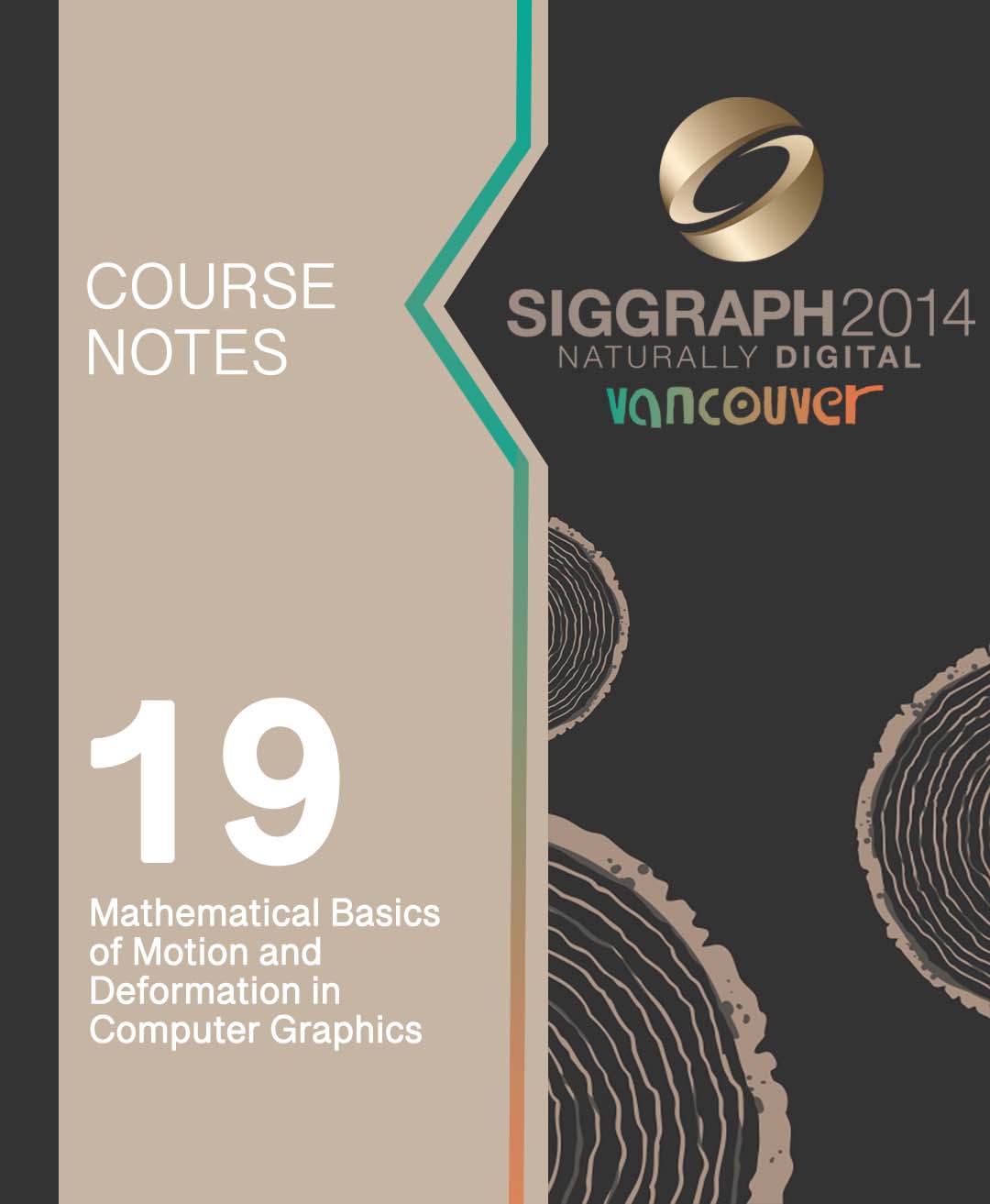“Mathematical Basics of Motion and Deformation in Computer Graphics” by Ochiai and Anjyo
Conference:
Type(s):
Entry Number: 19
Title:
- Mathematical Basics of Motion and Deformation in Computer Graphics
Course Organizer(s):
Presenter(s)/Author(s):
Abstract:
Description
While many technical terms, such as Euler angle, quaternion, and affine transformation, are quite familiar in our computer graphics community, their graphical meanings are sometimes slightly different from the original mathematical entities, which might cause misunderstanding or misuse of the mathematical techniques. Or, if we could have just a bit more curiosity about pure mathematics (relevant to computer graphics, of course), it must be easier for us to explore a new possibility of mathematics in developing a new graphics technique and/or tool. This course presents an intuitive introduction to several mathematical basics that are quite useful for various aspects of computer graphics, including curve/surface editing, deformation and animation of geometric objects. We also try to fill the gap between the original mathematical concepts and the practical meanings in computer graphics without assuming any prior knowledge of pure mathematics. While this course limited the topics to matrices, we hope this course will be understood so easily to realize the power of mathematical approaches through many examples demonstrated in the course. The organization of the course notes is as follows. We start with a brief introduction of a few mathematical basic concepts that appear throughout this course. Next we explain the basic definitions regarding the matrix group. These mathematical concepts will be demonstrated in the later application sections. In particular we provide several useful recipes for rigid motion description and global deformation, along with our recent work. Finally we show a list of further readings, suggesting that the power of mathematical approaches in graphics cannot be exhausted in this course. This course is an update of the SIGGRAPH Asia 2013 Course: Mathematical Description of Motion and Deformation: From basics to graphics applications. Based on the previous course experience, we have further added several detailed explanations of mathematical ideas, using illustrations and/or demo movies. A brief introduction of Lie theory and our latest work demonstrations should also be new features of the updated course.




